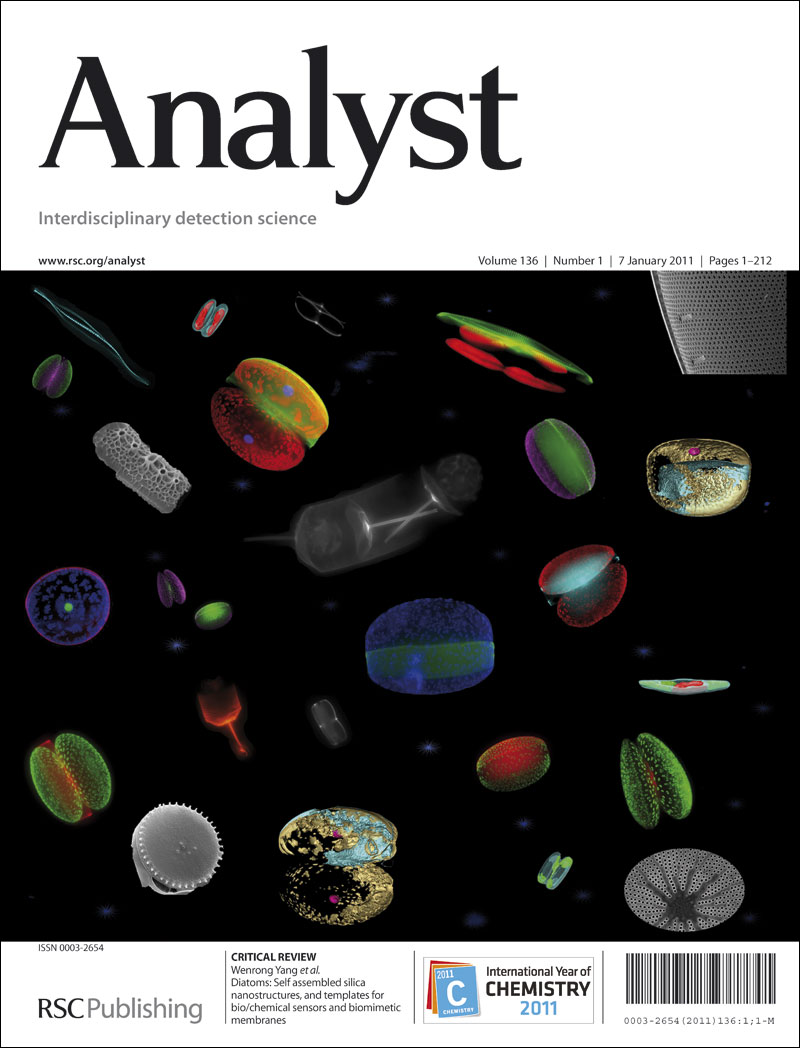Colourimetric Detection of Bisphenol A in Water: A Smartphone-Based Sensor Using Inverse Opal Molecularly Imprinted Photonic Crystal Hydrogel
IF 3.3
3区 化学
Q2 CHEMISTRY, ANALYTICAL
引用次数: 0
Abstract
Molecularly imprinted photonic crystal hydrogel (MIPCH) serves as a highly effective platform for the sensitive and selective detection of various analyte molecules. In this study, we present a smartphone-based inverse opal MIPCH (IOMIPCH) sensor designed for the sensitive and selective detection of bisphenol A (BPA) in water samples. The sensor is prepared by photopolymerizing the hydrogel precursor solution within the voids of a polystyrene (PS) photonic crystal (PC) opal film. This is followed by the etching of BPA molecules and the removal of PS spheres forming inverse opal structure with binding sites for analyte BPA. The sensor displays a vibrant structural colour that experiences a redshift upon rebinding of the BPA molecules. The structural colour change provides a visually observable indication of the sensor response. The IOMIPCH-BPA sensor demonstrates a low limit of detection (LoD) of 0.69 fM and a rapid response time of 4 minutes with the ability to selectively detect BPA even in complex sample matrices. Additionally, it is reusable and maintains its performance for up to one month. We used the sensor response images to train a deep learning-based regression model on the smartphone, enabling quantitative predictions of BPA concentration. This integration creates an accurate, portable smart sensor platform capable of real-time BPA sensing.水中双酚A的比色检测:基于智能手机的反蛋白石分子印迹光子晶体水凝胶传感器
分子印迹光子晶体水凝胶(MIPCH)是一种灵敏、选择性检测各种分析物分子的高效平台。在这项研究中,我们提出了一种基于智能手机的反蛋白石MIPCH (IOMIPCH)传感器,用于灵敏和选择性地检测水样中的双酚a (BPA)。该传感器是通过在聚苯乙烯(PS)光子晶体(PC)蛋白石薄膜的空隙中光聚合水凝胶前驱体溶液制备的。接下来是BPA分子的蚀刻和PS球的去除,形成具有分析物BPA结合位点的反蛋白石结构。传感器显示一种充满活力的结构颜色,在双酚a分子重新结合时经历红移。结构颜色的变化提供了一个视觉上可观察到的传感器响应指示。IOMIPCH-BPA传感器具有0.69 fM的低检测限(LoD)和4分钟的快速响应时间,即使在复杂的样品基质中也能选择性地检测BPA。此外,它是可重复使用的,并保持其性能长达一个月。我们使用传感器响应图像在智能手机上训练了一个基于深度学习的回归模型,实现了BPA浓度的定量预测。这种集成创造了一个精确的、便携式的智能传感器平台,能够实时检测BPA。
本文章由计算机程序翻译,如有差异,请以英文原文为准。
求助全文
约1分钟内获得全文
求助全文
来源期刊

Analyst
化学-分析化学
CiteScore
7.80
自引率
4.80%
发文量
636
审稿时长
1.9 months
期刊介绍:
"Analyst" journal is the home of premier fundamental discoveries, inventions and applications in the analytical and bioanalytical sciences.
 求助内容:
求助内容: 应助结果提醒方式:
应助结果提醒方式:


